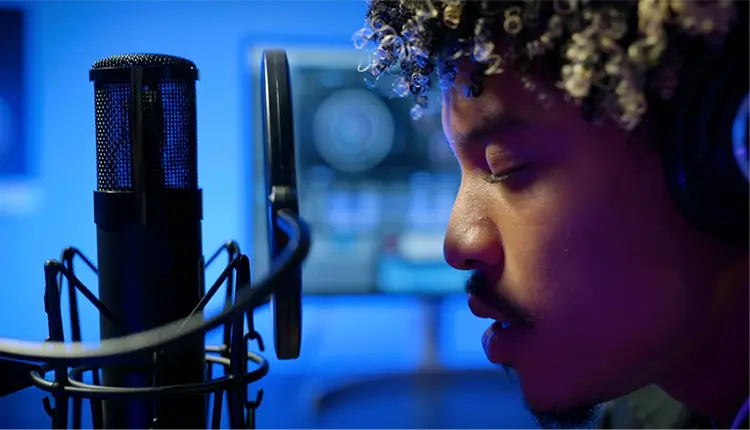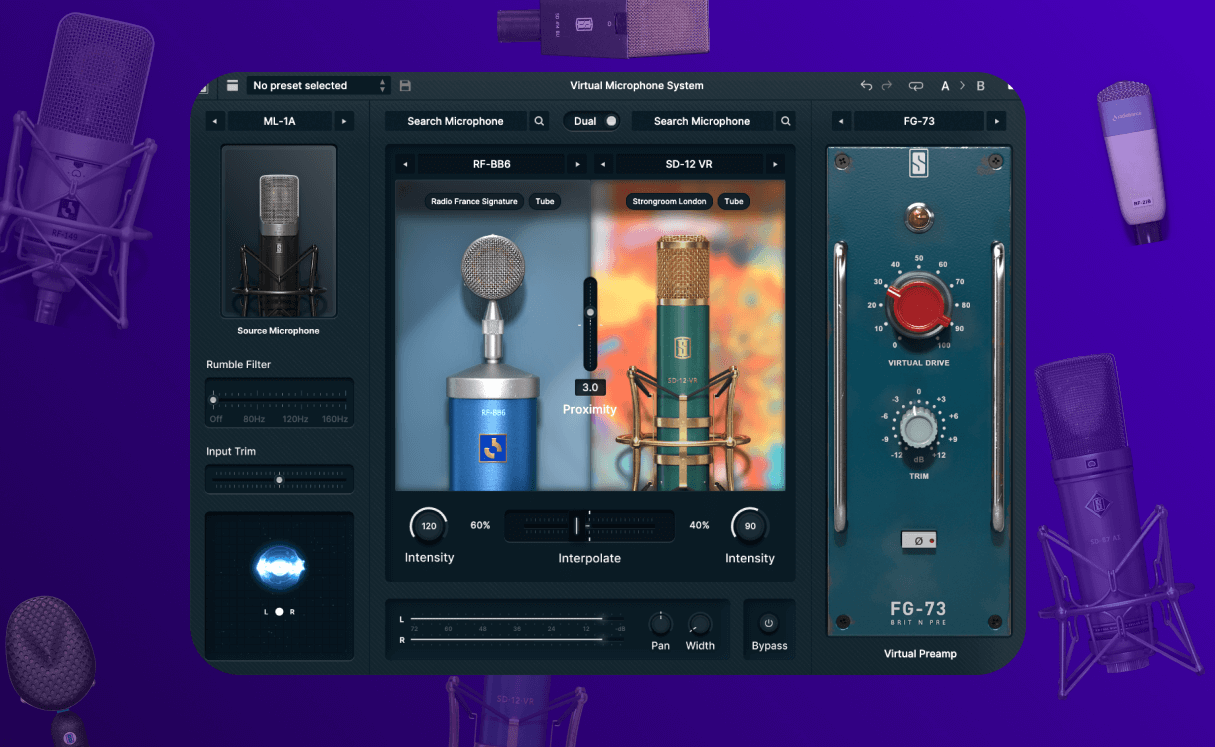Key Takeaways
- Understanding the essential stages of music production-songwriting, arranging, recording, mixing, and mastering-is crucial for producing quality tracks that resonate with audiences.
- Investing in foundational music production equipment like a computer, DAW, audio interface, studio monitors, and microphones enhances the quality of your recordings and overall workflow.
- Utilizing key production techniques such as layering sounds, using virtual instruments, and incorporating sampling and loops can greatly enrich your music, making it stand out in a competitive industry.
New to music production and unsure where to begin? This “music production for beginners” guide covers the essential steps and tools to start producing music today. Learn about the key stages of production, necessary equipment, and tips for setting up your home studio. Start your music production journey on confident footing.
Understanding Music Production
Music production, especially in the realm of modern music production, is the fascinating journey from a raw musical idea to a polished and ready-to-share track. It encompasses several stages, including:
- Songwriting
- Arranging
- Recording
- Mixing
- Mastering
These stages are essential to produce music that resonates with audiences and stands out in the industry.
Each stage is a critical building block that contributes to the overall foundation of the final piece. A music producer is at the heart of this process, guiding the creative and technical aspects to bring an artist’s vision to life. From offering input during pre-production to managing budgets and providing a full creative vision, a music producer plays a pivotal role in the music production process.
Successful music producers often rely on their collaboration and communication skills. Working closely with recording engineers, mastering engineers, and other musicians, producers ensure that every element of the track aligns with the artist’s vision. Producers also need to demonstrate project management skills in order to meet deadlines and maintain the production process on track. These capabilities play a significant role in the successful completion of projects within the entertainment industry. Understanding music theory, having a solid grasp of digital audio workstations (DAWs), and mastering technical tools are also vital for achieving high-quality recordings and mixes.
Essential Music Production Equipment

You’ll need certain essential equipment to start your journey in music production. At the very least, you’ll need a computer, a Digital Audio Workstation (DAW), and a good pair of headphones. These tools are the foundation of your music production setup and will allow you to start producing music right away. As you advance, you might consider adding more specialized gear to enhance your workflow and improve the quality of your recordings.
Key pieces of equipment for setting up a home recording studio include:
- An audio interface, which is crucial for connecting microphones and instruments to your computer
- Studio monitors, which provide accurate sound reproduction for mixing and mastering
- A dependable microphone, be it dynamic or condenser, for capturing high-quality vocals and instrument recordings
Gradually upgrading your gear as you improve will help you steadily achieve better sound quality and more professional results.
Computer Requirements
Your music production setup primarily revolves around your computer. It’s where you’ll develop your musical ideas, record tracks, and mix and master your music. While an average consumer system might suffice for basic production tasks, investing in a high-performance computer is recommended for more complex projects.
Here are some key specifications to look for in a music production computer:
- At least 8GB of RAM (ideally 16GB)
- A 4-core processor
- An SSD for your primary drive
- An HDD for secondary storage
These specifications will ensure smooth operation and provide a good balance between performance and cost.
When working with a DAW, the buffer size can impact your computer’s performance. A larger buffer size allows the DAW to handle audio more smoothly, while a smaller buffer size makes the computer work harder, which can be challenging during intensive recording sessions. Selecting the right computer specifications will help you avoid technical issues and focus on the creative aspects of music production.
Choosing Your Digital Audio Workstation (DAW)
A Digital Audio Workstation (DAW) serves as your creative playground where you create, record, edit, mix, and master your music. The selection of an appropriate DAW is vital as it influences your workflow and determines your overall productivity. Popular DAWs include:
Each offers their own unique features and capabilities. Some DAWs, like GarageBand and BandLab, are free and provide a great starting point for beginners.
When selecting a DAW, consider factors such as compatibility with your computer’s operating system, ease of use, and your budget. It’s also important to think about the style of music you want to produce, as some DAWs are better suited for certain genres. For example, Ableton Live is popular among electronic music and hip-hop producers, while Pro Tools is widely used in professional recording studios. Testing multiple DAWs before committing to one can help you find the best fit for your needs.
Soundtrap is an example of a web-based music studio platform that offers an all-in-one solution for music production. It includes pre-made loops and sounds, making it easy to start producing music without needing extensive prior knowledge. Whether you choose a free or paid DAW, finding one that suits your workflow and style is key to a successful music production journey.
Audio Interface Basics
An audio interface forms an integral part of your music production setup. It performs the following functions:
- Converts analog sound to digital, allowing you to record music and instruments through microphones or line inputs.
- Helps mitigate latency issues by providing dedicated audio drivers for professional-level audio work.
- Ensures that your recordings are clear and free from delays.
The number of inputs and outputs you require should be a key consideration when selecting an audio interface. For beginners, a simple setup with one microphone and one instrument input might be sufficient. However, if you plan to record multiple instruments or a full band, you may need an interface with more inputs.
The Focusrite Scarlett 2i2 is a popular choice for beginners due to its reliability and ease of use.
Studio Monitors and Headphones
Producing high-quality music necessitates accurate sound monitoring. For this purpose, studio monitors and headphones are indispensable tools. Studio monitors provide an authentic representation of your track with a flat frequency response, ensuring that your music translates well across different playback systems. For most home studios, monitors with 5 or 6-inch drivers are sufficient.
Headphones, on the other hand, allow you to isolate details and identify subtle nuances in your tracks. Flat headphones are essential for accurate sound monitoring during production and mixing. The Beyerdynamic DT 770 Pro is a great option for beginners due to its high-quality sound and comfortable design.
Investing in good studio monitors and headphones will help you make better mixing decisions and achieve professional-sounding results.
Microphone Options
To capture high-quality recordings, selecting the right microphone is of paramount importance. Dynamic and condenser microphones are the two most popular types of microphones. Each type has unique characteristics and is suitable for different recording scenarios:
- Condenser microphones, like the Slate Digital ML-1, are more sensitive and are commonly used for recording vocals and acoustic instruments. They require phantom power, which is usually provided by the audio interface. Beginners should aim to find a balance between quality and price, as it’s possible to get great recordings with reasonably priced microphones.
- Dynamic microphones, such as the Slate Digital ML-2, are great for recording loud sound sources like electric guitars and drums. They are durable and can handle high sound pressure levels without distortion.
Having both a dynamic and a condenser microphone in your arsenal will give you the versatility to record a wide range of instruments and vocals.
Setting Up Your Home Studio

Creating an effective home studio is the first step towards producing professional-quality music. The size of your studio should reflect how you plan to use it; larger spaces are needed for tracking drums or a full band, while smaller rooms can work for solo projects. When selecting a room, avoid low ceilings and square shapes, as they can cause sound issues such as reflections and frequency cancellations.
Clear playback and better mixing decisions demand proper acoustic treatment. Use materials like foam panels to minimize sound reflections and improve sound quality. Investing in basic room treatment will make a significant difference in how your music sounds. Additionally, ensure that your equipment is set up ergonomically to create a comfortable and efficient workspace.
The Music Production Process
The music production process is a multi-faceted journey that involves several stages:
- Songwriting is where creativity takes center stage, allowing you to craft melodies, harmonies, and rhythms that resonate with listeners.
- Arranging involves organizing the song parts and selecting instruments to create a cohesive structure.
- Tracking is the process of recording each instrument and vocal performance, often one track at a time.
- Editing refines these recordings, adjusting pitches and timings to ensure a seamless mix.
- Mixing combines all the recorded elements, balancing sound levels, and adding effects to create a polished track.
- Mastering adds the finishing touches, preparing your music for distribution and ensuring it sounds great on all playback systems.
Each step plays a critical role in shaping the final sound of your music.
Songwriting and Composition
Songwriting is where ideas become art. The process usually involves:
- Brainstorming musical ideas
- Experimenting with different melodies, harmonies, and rhythms
- Creativity and experimentation
- Considering the emotional impact you want to convey
- How each element contributes to the overall feel of the song
A good song should have:
- A melody and harmony that are catchy enough to stay in the listener’s head
- A rhythm that makes the listener tap their foot
- A chord progression that dictates the mood and tone of the song
- An arrangement that organizes song parts and selects instruments to create a cohesive structure
Don’t be afraid to jam around and experiment with different key signatures until you find what works best.
Most popular songs follow a standard structure which typically includes:
- Intro
- Verse
- Hook
- Bridge
- Outro
This structure helps create an engaging and memorable song for listeners. While the content of the full song is important, you will benefit from putting some extra effort into your hook and bridge.
The hook is considered the most important part of a song, as it’s the section that listeners remember the most. The bridge brings variety and helps maintain the listener’s interest by introducing a different harmonic structure and lyrics. By following these principles, you can create songs that captivate and resonate with your audience.
Recording Techniques
When producing professional-quality recordings, capturing high-quality takes is a essential. One of the first steps is finding the quietest space possible to minimize background noise, which can easily ruin a good take. Proper microphone setup is also crucial. Placing the microphone correctly and using pop filters can help reduce unwanted noise and ensure clean recordings.
During the recording phase, it’s important to focus on:
- Capturing a superior live performance, even if you have access to editing tools
- Recording multiple takes to capture unique variations that add character to the track
- Remembering that the goal is to get the best possible performance from the artist, which will make the mixing and editing processes much smoother.
Editing Your Tracks
Editing is a critical phase in music production, where captured tracks are refined and prepared for mixing. This stage involves:
- Adjusting pitches
- Timing
- Ensuring smooth transitions between different parts of the track
- Eliminating any inconsistencies or noise that might have been captured during recording
The purpose of audio editing is to:
- Polish the raw recordings
- Make them sound cohesive
- Refine each track to set the foundation for a seamless and professional mix
- Enhance the overall quality of your music, making it more enjoyable for listeners.
Mixing Fundamentals
Mixing is the process of combining all the recorded elements into a stereo 2-track mix, ensuring clarity and balance among all components. The key elements of mixing include:
- Balancing sound levels
- Equalization (EQ)
- Compression
- Reverb
Balancing levels is crucial to ensure each instrument and vocal can be heard clearly without overpowering each other.
Using EQ helps shape the sound by:
- reducing and highlighting specific frequencies
- adding brightness to vocals with a high slope around 10kHz
- removing unnecessary low frequencies from female vocals with a low cut below 100Hz
Compression controls the dynamics of the audio, ensuring a balanced and polished sound. Carefully adjusting the attack and release times in compression will help you achieve the desired effect in your mix.
Reverb adds space and depth to your mix, making it sound more natural and cohesive. Different reverb types and settings can be used to suit various elements of your mix. By mastering these fundamental techniques, you can create a mix where every component shines yet works cohesively as part of the bigger picture.
Mastering Your Music
Mastering is the final step in the music production process, aimed at adding the finishing touches and making the track sound as good as possible. This stage ensures your music is polished and ready for distribution, with the goal of bringing the track to the next level in clarity and brilliance. Mastering helps make a collection of songs sound coherent and sonically consistent as part of the same album.
For beginners, using an automated mastering service like VIRTU Assisted Mastering can be a good starting point to understand the process and benchmark your ears. Alternatively, hiring a mastering engineer can provide professional results and ensure your music translates well across different playback systems. Mastering is essential for achieving a final product that stands out in the competitive music industry.
Key Production Techniques

Elevating your music to new heights can be achieved by mastering key production techniques. Techniques such as:
- Sampling
- Layering
- Synthesis
- Arrangement
are vital tools in a modern music producer’s arsenal. These techniques allow you to add depth, complexity, and unique elements to your tracks, making them stand out in a crowded market.
Quantization can adjust the timing of recorded notes or beats, fixing sloppy performances or creatively altering the rhythmic feel. However, overusing quantization can make the music sound robotic and soulless, so it’s important to use it judiciously.
Reverb is another essential tool that adds space and depth to recordings. It is often used on:
- Vocals
- Guitars
- Snare drums
- Strings
By mastering these techniques, you can enhance the quality and creativity of your music production.
Layering Sounds
Layering sounds involves combining multiple audio tracks to create a fuller, more interesting auditory experience for the listener. Effective sound can add depth and richness to your music, and requires careful selection and blending of different sonic elements to ensure they complement each other.
Layering can also help fill out the frequency spectrum, making your music sound more balanced and dynamic. Whether you’re adding subtle background elements or bold lead sounds, layering is a powerful tool for enhancing your music production.
Using Virtual Instruments
Virtual instruments offer a vast array of sounds without the need for physical hardware. These instruments can be integrated into your DAW, allowing you to access a wide range of sounds and effects at your fingertips. Virtual instruments can streamline the creative process, enabling you to:
- Experiment with different sounds and ideas quickly
- Easily switch between different instrument sounds
- Customize and tweak sounds to fit your production
- Access a wide variety of instruments and effects without the need for physical space or expensive equipment
By utilizing virtual instruments and music production software, you can enhance your music production and create unique and professional-sounding own music tracks with actual music.
Using virtual instruments can expand your sonic palette and allow you to incorporate diverse elements into your music. From realistic acoustic instruments to cutting-edge electronic sounds, virtual instruments provide endless possibilities for creativity. Incorporating these tools into your production workflow can help you achieve professional-sounding results without breaking the bank.
Sampling and Loops
Sampling involves taking a portion of a sound recording and reusing it in a different musical context, often leading to innovative and unique tracks. This technique has been used by many successful producers to create new music from existing recordings. Loops, on the other hand, are short sections of music that can be repeated seamlessly, providing a rhythmic or melodic foundation for a track.
Sampling and loops can add a distinctive character to your music and inspire new ideas. Notable producers like DJ Shadow, The Avalanches, DJ Premier, and Kanye West have built careers on creatively manipulating samples. By incorporating sampling and loops into your production workflow, you can create tracks that are both innovative and engaging.
Learning Resources and Communities
A plethora of online platforms are available for learning music production and honing your skills. Udemy offers a comprehensive course on Logic Pro X, which is suitable for Mac users and includes 40 hours of on-demand video. Coursera provides a Music Production Specialization by Berklee College of Music, covering topics such as music production technology and Pro Tools basics.
Practical Tips for Beginners
For beginner music producers, practical advice can have a significant impact. Applying the ‘less is more’ principle can help you avoid overcomplicating your tracks and maintain clarity and focus. Watching tutorials and seeking mentoring from experienced producers can provide practical insights and accelerate your learning process.
Here are some tips for success in music production:
- Listen to a wide range of music genres to fuel your creativity and prevent your productions from becoming repetitive.
- Collaborate with other producers to enhance your skills and have fulfilling and fun experiences.
- Remember that persistence and hard work are key to long-term success in music production, often outweighing natural talent.
Summary
Mastering the art of music production involves understanding the entire process, from songwriting to mastering, and having the right equipment and techniques at your disposal. By setting up a well-equipped home studio and continuously learning and experimenting, you can create professional-quality music that resonates with listeners. Remember, collaboration and communication are essential for bringing an artist’s vision to life.
As you embark on your music production journey, stay motivated and keep honing your skills. The world of music production is vast and full of opportunities. With persistence and creativity, you can achieve your musical goals and share your unique sound with the world. So, start producing and let your music speak!
Frequently Asked Questions
What is the role of a music producer?
The role of a music producer is to oversee the entire music production process, guiding the creative and technical aspects to bring the artist’s vision to life. This includes overseeing everything from songwriting to mastering.
What are the essential pieces of equipment for beginner music producers?
For beginner music producers, the essential pieces of equipment include a computer, Digital Audio Workstation (DAW), audio interface, studio monitors, headphones, and a microphone. These tools form the foundation of a music production setup.
How important is acoustic treatment in a home studio?
Acoustic treatment is crucial for a home studio as it minimizes sound reflections and improves sound quality, leading to better mixing decisions and clear playback. It can make a significant difference in how your music sounds.
What are some popular DAWs for music production?
There are several popular DAWs for music production, such as Ableton Live, Pro Tools, Logic Pro, FL Studio, and GarageBand. It’s essential to select the one that best fits your workflow.
How can beginners improve their music production skills?
To improve your music production skills as a beginner, watch tutorials, seek mentoring, engage with online communities, experiment with different techniques, and collaborate with other producers. Listening to a wide range of music can also enhance your skills and creativity.



